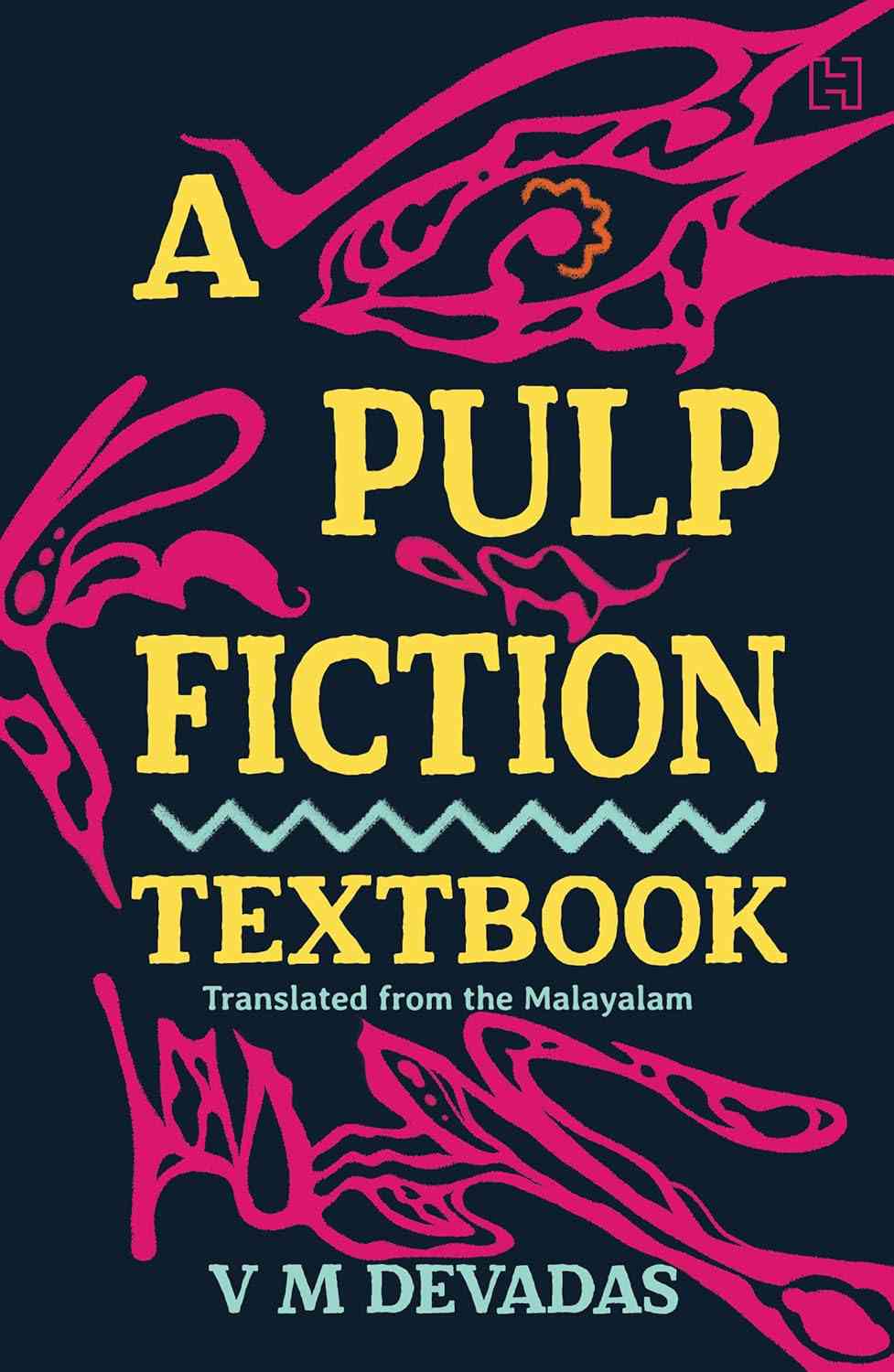After having been left alive in an anti-intellectual world, the novelist cannot be blamed for presuming that they must dumb down. That they should think like advertisers, less like novelists. VM Devadas’s A Pulp Fiction Textbook, a novel written like a textbook, is a fated inevitability in this world. His characters either resort to suicide or are murdered in each chapter. Like when you solve a theorem, the book begins with the assumption that these stories are divorced, preluding the reader’s task to prove otherwise. Then the book proffers all the clues. You begin with the realisation that these characters died ensnared in the sleaze expected to chaperone a sex-toy scandal in a country like ours. If the novel’s chosen form isn’t a tell-tale of its cookie-cutter style, the fact that it mistakes its brevity for the brisk is. Quick-paced maximalism, it seems, is no longer desirable in the genre of pulp novels.
Piecing together clues
Although a translation, the slender novel elides the question of whether it’s translated well. (In fact, the translator is left unacknowledged on the cover, but it’s worth noting that the writer possesses the English text’s copyright.) I’m inclined to say the “original,” the apocryphal, better, inviting an anaemic rendering in English, is just alright, robotic, even, deftly conceivable by a machine if offered an easily procurable formula. Not to say A Pulp Fiction Textbook is not textbook pulp. The lives of its many characters, some of whom are strangers, are entangled, too knotted to consider untangling. Incivility is the pulse of pulp fiction, gore the norm. In Devadas’s novel, a customs officer is the sponsor of an orphan girl and the husband of a woman with one breast and a frigid, withholding sexual appetite, made parsimonious by the loss of a lover who now wanders lonely after her marriage to the customs officer. As it is pulp, the orphan girl, sequestered within the rules of the church, self pleasures; her distant sponsor takes on the quintessence of Humbert Humbert, the “merchant” of sex toys fattens with age, and all that is sordid proliferates.
When you read, you begin to predict what will happen next. Speaking the language of the novel means speaking the language of an automaton: “I was informed that my husband, the customs officer, will be transferred from Delhi and is returning home. After almost six years of living apart, we are finally going to resume living together. Typically, this news would bring joy to any wife. However, for me, it felt like a loss of freedom.” Characters often remind us of facts in case we’ve forgotten, clues we must take notice of, like that the customs officer is the husband of this wife, even if we could’ve pieced that together, and any momentum that can build flails.
Like in a textbook, a set of exercises accompanies each “lesson” or chapter, forcing the reader to cosplay as a student, grilled with expected questions like, “You may have noticed the title of this chapter. Can you find a children’s classic novel related to it and write what would have happened if the Santhome girl had been a character in that novel?” (The chapter is titled “Alone in Wonderland.”) In their bid to serve an unorthodox form, the orthodox questions make you feel like a child with a phone, bereft of imagination. Perhaps that’s the point. A Pulp Fiction Textbook is painfully imaginable, never quite surprising, and a classic perjury of supposing that form will do all the work. That calling something experimental is quite enough.
A predictable route
The form of the novel promises an “interactive journey”, as if any other book doesn’t do just that, duping the reader into thinking that they have more dominion than they do. We are to believe that other books invite passivity, and A Pulp Fiction Textbook invites interactivity. In another world, I would’ve thought that the publishing industry was colluding with Devadas to make reading a novel, an anachronistic activity for many, a “productive” endeavour, or at least appear so. After all, a novel like A Pulp Fiction Textbook doesn’t attest to a desire for new forms of literature but for easy, comfortable reading. It expects the nascent awe of its chosen form to carry over to the story. But in a mystery, a reader reads not only to confront where their predictions were correct, which would leave a rather unsatisfying aftertaste, even if a sweet, momentary release, but also whether the writer had led them along the wrong path while making them believe otherwise. In short, to see whether the novelist is a rake of readers.
A Pulp Fiction Textbook isn’t a book for readers, but to-be readers, aspiring readers, a customer base that glazes the publisher’s eye. The to-be reader of this philistine world wishes to quote Leo Tolstoy without ever having read him. They have no time for such trivialities. So, an avuncular novel that promises the avant-garde without any prerequisite of good taste, built over shelves of literary citizenship, is an easy sell. I’m sure Devadas, who quoted the man, read his Tolstoy, even if he didn’t bother giving his reader a test after every chapter.

A Pulp Fiction Textbook, VM Devadas, translated from the Malayalam, Hachette India.

